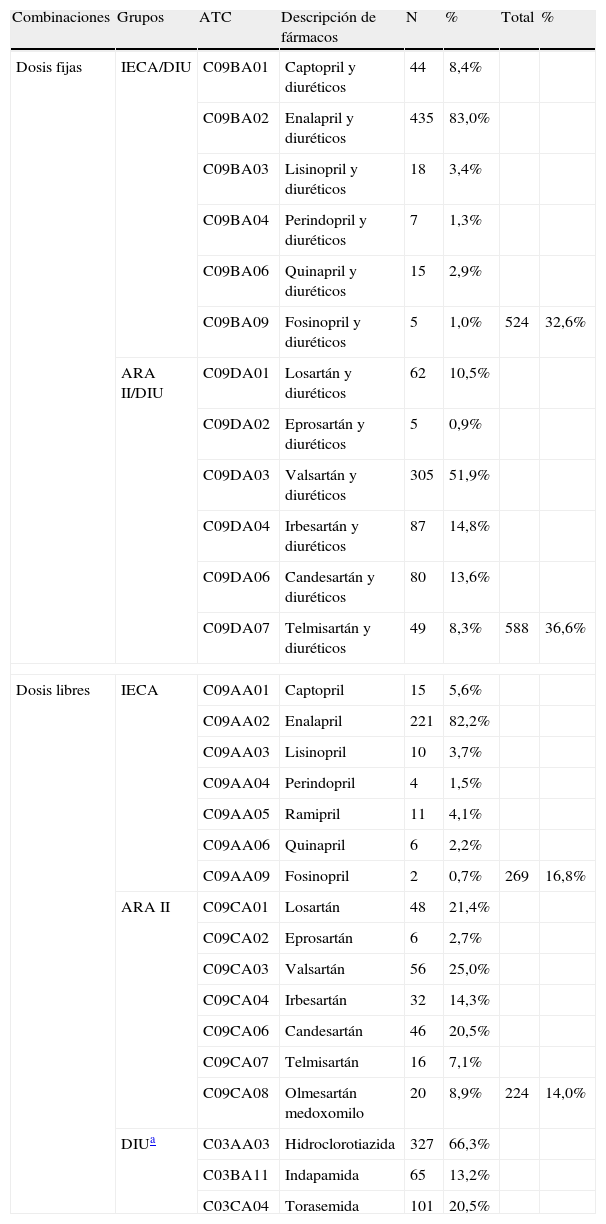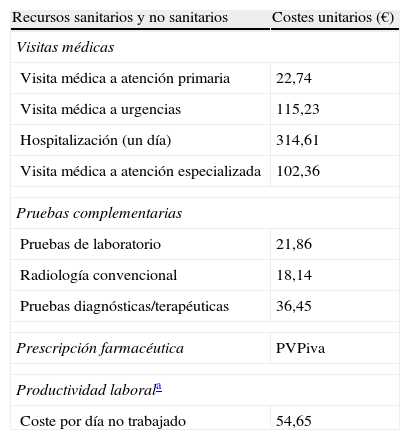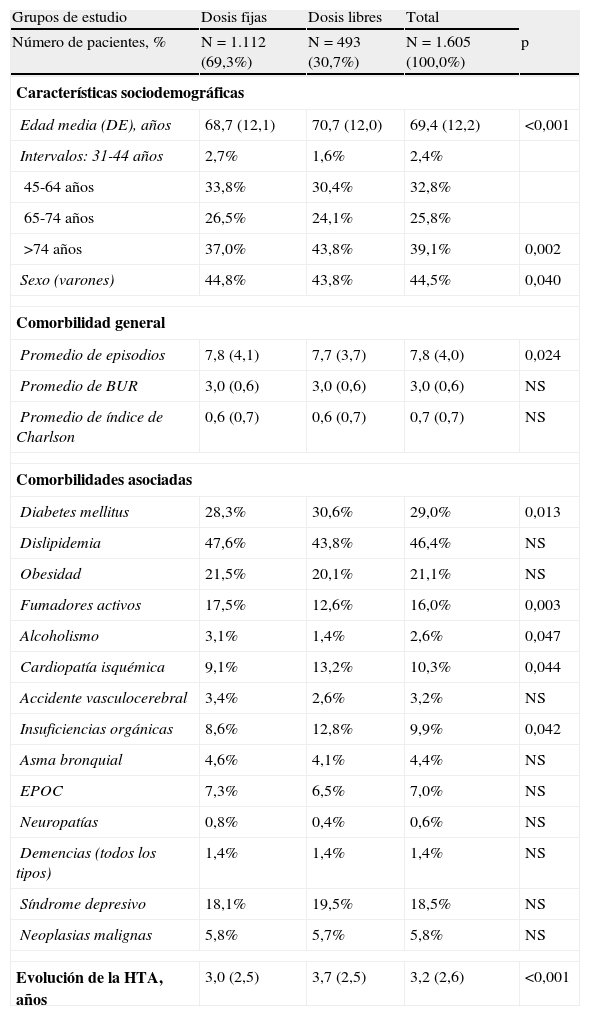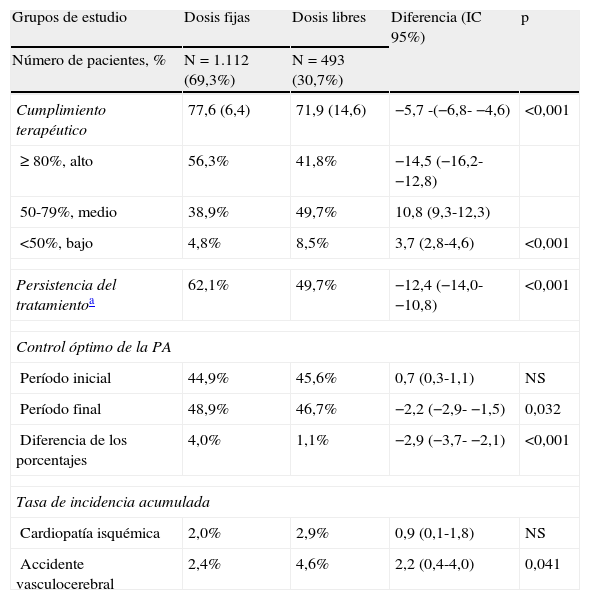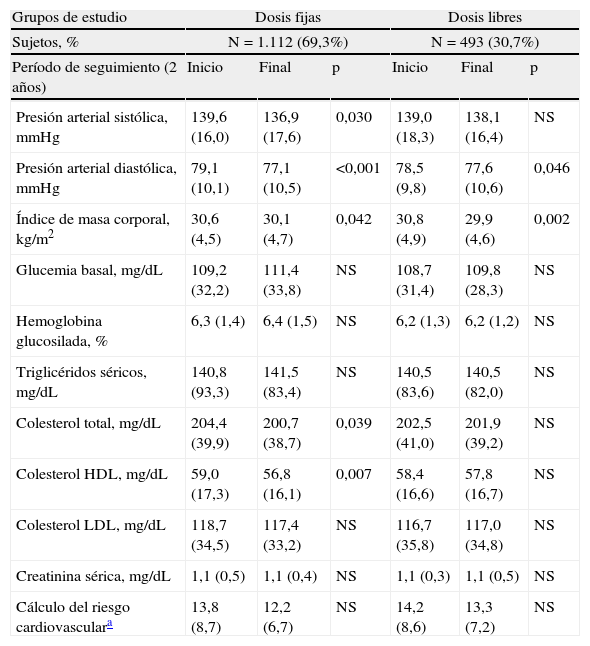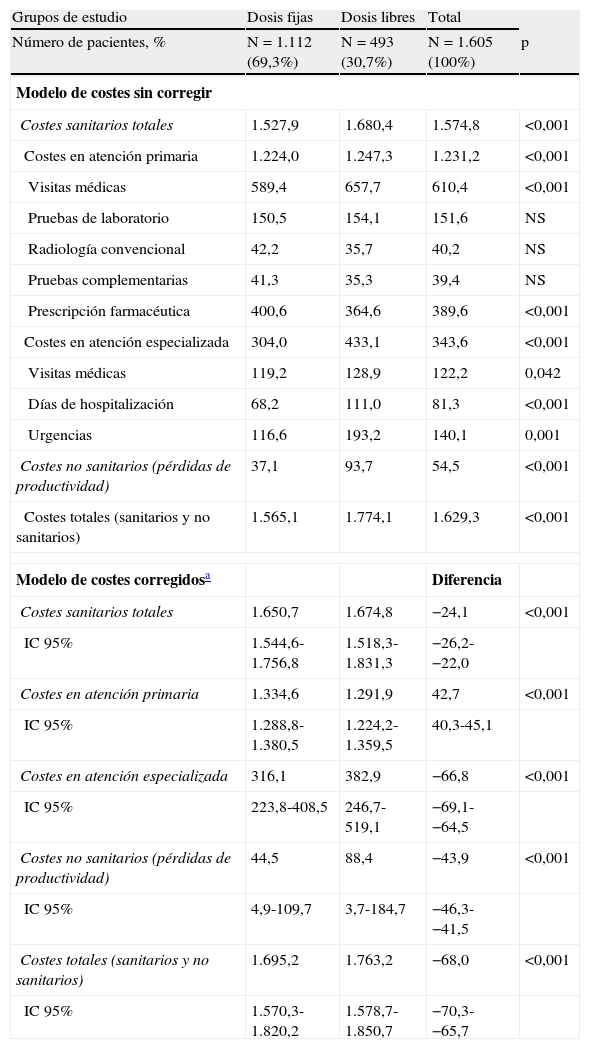Determinar la incidencia de eventos cardiovasculares (ECV) y costes sanitarios en función del cumplimiento, persistencia y control de la presión arterial, comparando pacientes consumidores de dosis-fijas (DF) frente a dosis-libres (DL) en el tratamiento de la hipertensión arterial (HTA).
Pacientes y métodoDiseño observacional-multicéntrico. Se incluyeron pacientes>30 años que iniciaron tratamiento farmacológico (año 2006). Se establecieron dos grupos de estudio: DF (inhibidores de la enzima convertidora de angiotensina/diuréticos [IECA/DIU]; antagonistas de los receptores de angiotensina de tipo II [ARA II]/DIU) y DL (IECA+DIU; ARA II+DIU, por separado). Se recogieron variables sociodemográficas, comorbilidad, parámetros bioquímicos, cumplimiento y persistencia (según criterios ESH-ESC). Se determinó la incidencia acumulada de ECV y un modelo de costes totales (diferenciando sanitarios/directos y no-sanitarios/indirectos). El seguimiento de los pacientes se realizó durante dos años. Se realizó un análisis estadístico que incluyó regresión-logística, riesgos proporcionales y ANCOVA.
ResultadosSe reclutaron 1.605 pacientes, 1.112 (69,3%) en DF y 493 (30,7%) en DL (p<0,001). La edad media (DE) fue de 69,4 (12,2) años y un 55,5% eran mujeres. Las DF mostraron un mejor cumplimiento (77,6 frente a 71,9; p<0,001) y persistencia del tratamiento (62,1%, intervalo de confianza del 95% [IC 95%] 56,3-67,9%, frente al 49,7%, IC 95% 38,5-60,9%; p<0,001). El control óptimo de la presión arterial en DF fue superior (48,9% frente a 46,7%; p<0,001). La incidencia acumulada de accidente vasculocerebral en DL fue de 4,6% frente a 2,4% (p=0,041). El coste total fue menor (1.650,7 € frente a 1.674,8 €; p<0,001) en atención especializada (316,1 € frente a 382,9 €; p<0,001), ocasionando menos ingresos hospitalarios y pérdidas de productividad laboral (44,5 € frente a 88,4 €; p<0,001).
ConclusionesEl cumplimiento y la persistencia del tratamiento para la hipertensión en DF mejoran el control terapéutico, ocasionando una reducción de ECV y costes sanitarios totales.
To determine the incidence of cardiovascular events (CVE) and health care costs in relation to compliance, persistence and level of blood pressure control when comparing patients treated with single-pill combinations (SPC) or free combinations (FC) for the treatment of hypertension.
Patients and methodsObservational, multicenter study that included patients>30 years old, from six primary care teams and two hospitals, who started pharmacological treatment for hypertension during 2006. Two study groups were established: SPC (ACEIs/diuretics; ARBs/diuretics) and FC (ACEIs+DIU; ARB+DIU, separately). Main variables studied were sociodemographic data, comorbidity, Charlson-index, compliance, persistence and achievement of therapeutic goals (ESH-ESC criteria). The cumulative incidence of CVE and a total-cost model were determined (differentiating: health/direct; non-health/indirect). Patients were followed for two years. Statistical analysis included logistic regression, Cox proportional hazards model and analysis of covariance. Statistical signification: p<0.05.
Results1,605 patients were recruited, 1,112 (69.3%) receiving SPC and 493 (30.7%) receiving FC, p<0.001; mean age: 69.4 (12.2) years; women: 55.5%. FC treatments were associated with ischaemic heart disease (OR=1.4; 95% CI: 1.1-2.0) and organ failure (OR=1.5; 95% CI: 1.2-2.1), p<0.031. Patients on SPC showed better therapeutic compliance (77.6% vs 71.9%; p<0.001) and longer persistence of treatment (62.1% on-treatment at 24-months [95% CI: 56.3-67.9] vs 49.7% [95% CI: 38.5-60.9]; p<0.001). Optimal control of blood pressure was higher in SPC (48.9% [95% CI: 43.0-54.8] vs 46.7% [95% CI: 35.6-57.8]; p<0.001). Cumulative incidence of cerebrovascular accidents in FC was 4.6% vs 2.4% in SPC; p=0.041. The total health care costs were lower in SPC (1,650.7 € vs 1,674.8 €; p<0.001), including lower specialized care costs (316.1 € vs 382.9 €; p<0.001), fewer hospital admissions and less loss of labour productivity (44.5 € vs 88.4 €; p<0.001).
ConclusionsBetter compliance and persistence with antihypertensive fixed-dose combinations improves therapeutic control, leading to a significant reduction of cerebrovascular accidents and total health care costs.
Artículo
Comprando el artículo el PDF del mismo podrá ser descargado
Precio 19,34 €
Comprar ahora







